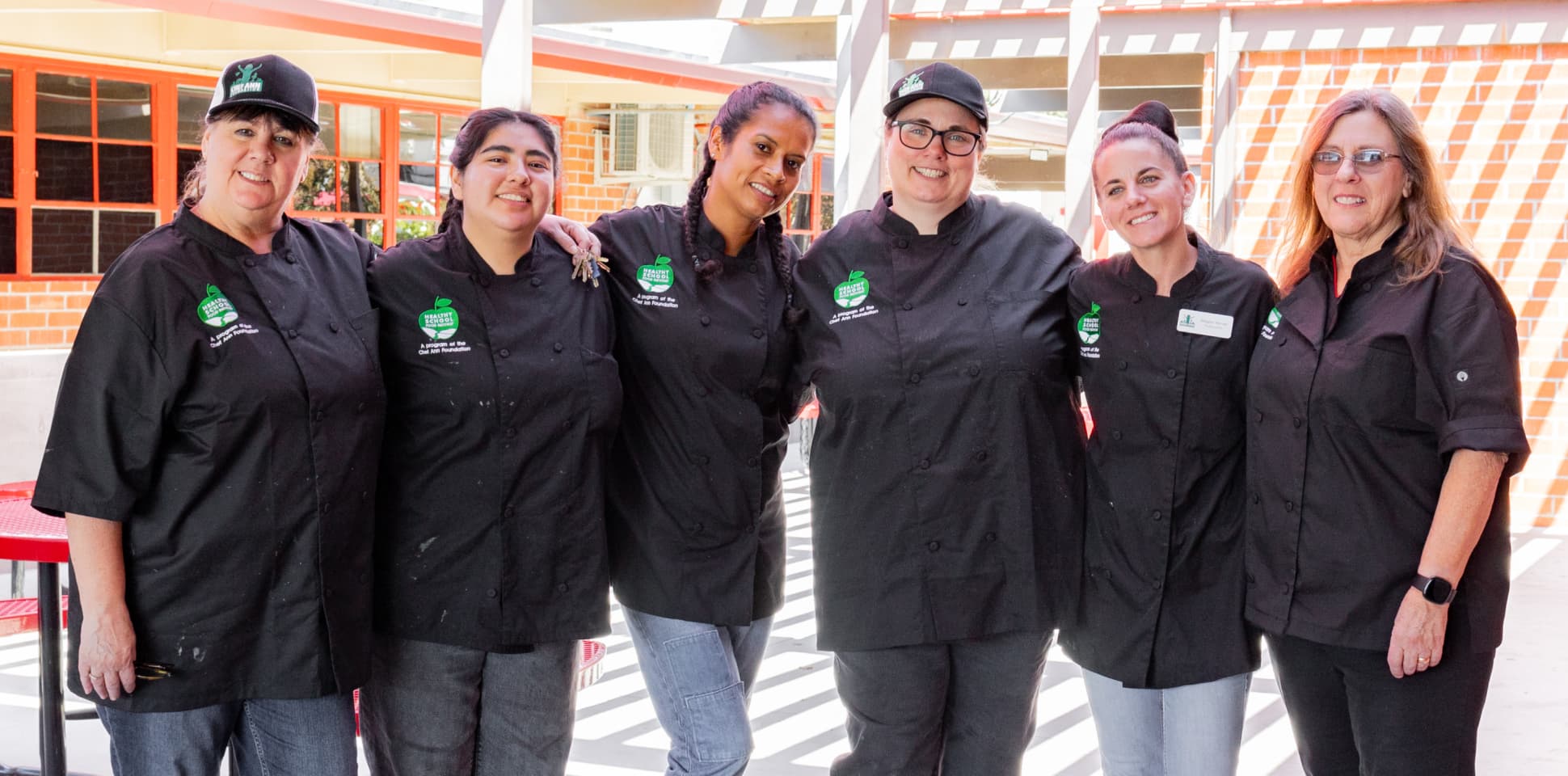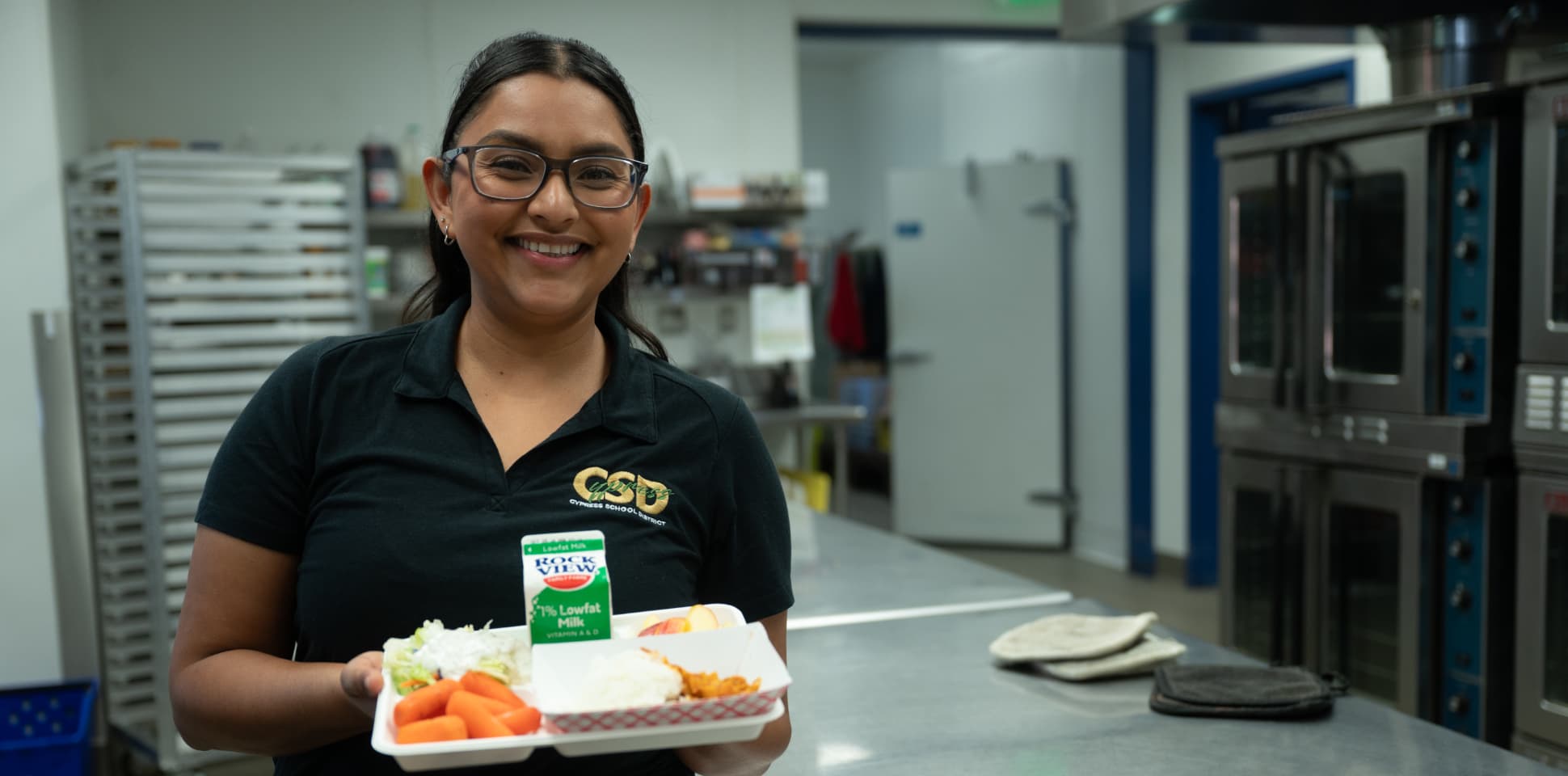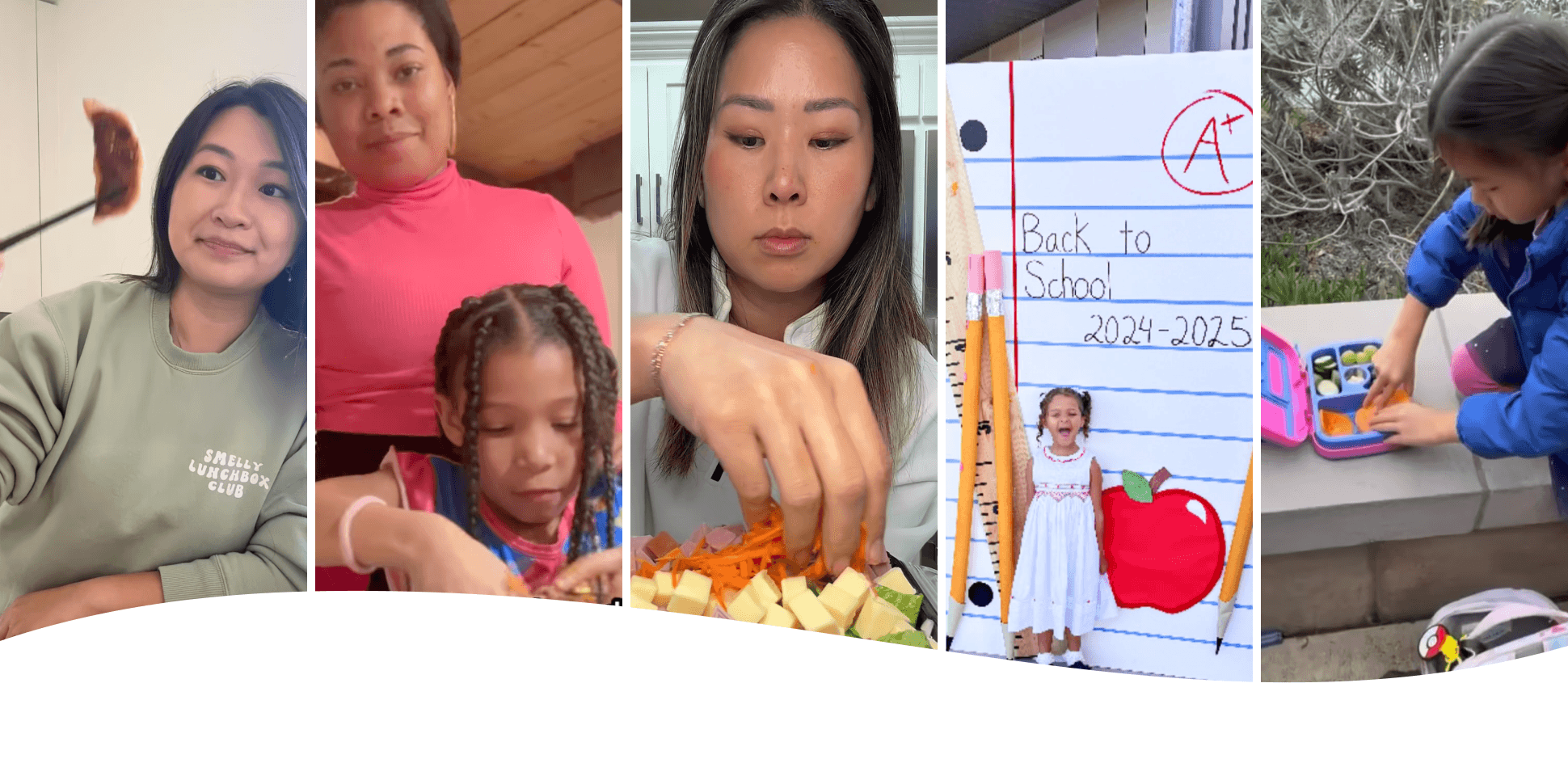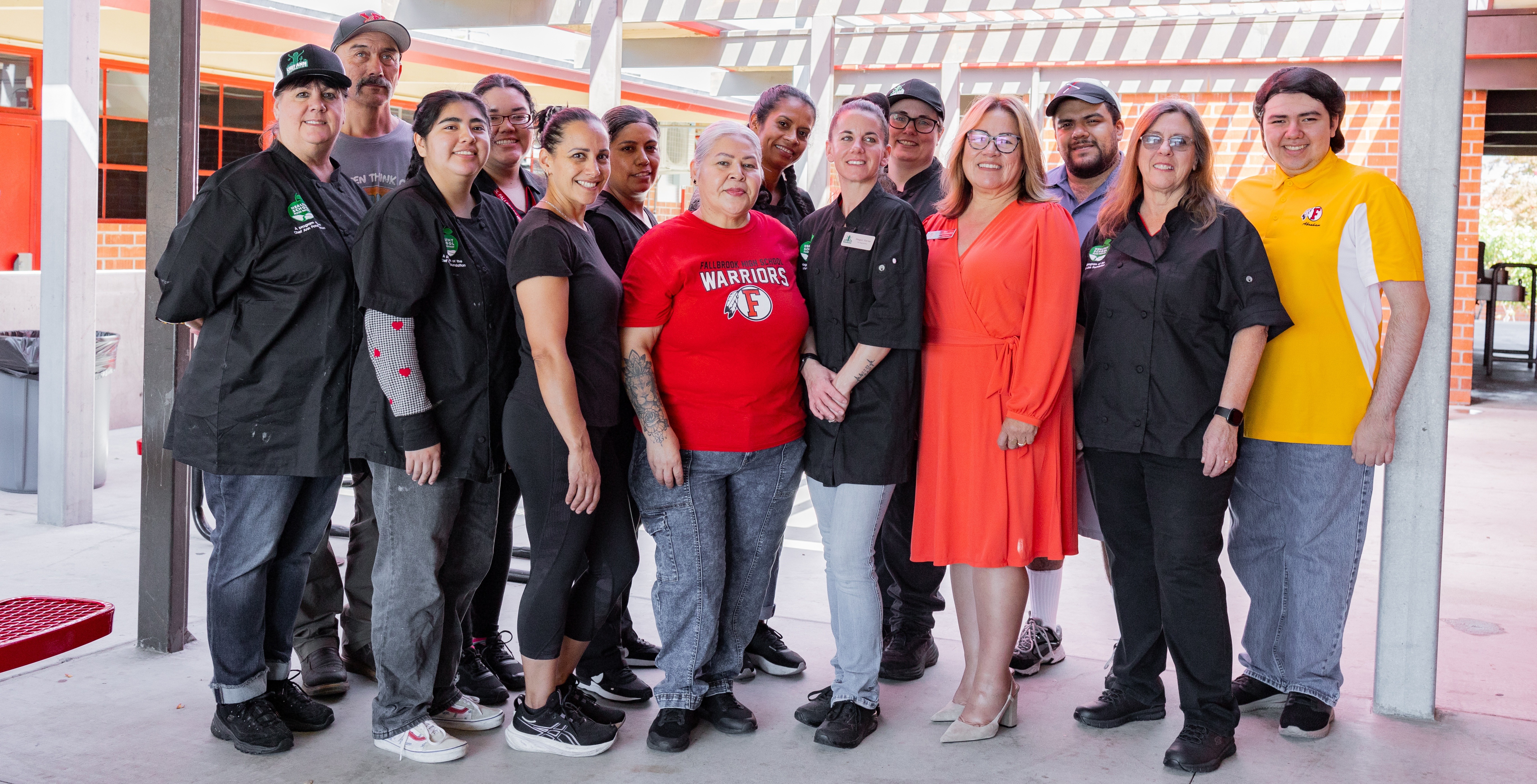I call the school food team at Fallbrook Union High School District my amazing dream team. Every one of them cares so deeply, and they’re fearless. There’s not an idea that you can throw at them that they’re not willing to try.
Our School Food Professionals learned a lot of their skills right here. Our team member Veronica Bernal is a great example. She’s an excellent cook at home, but at home, you don’t often have to make 400 of the same dish while meeting a whole list of nutritional regulations. She learned that on the job.
There was a point where our program felt like it was hitting a wall. We were using a lot of home recipes and what I call “Chef Pinterest,” going online and asking “What can we make?” We could read recipes and buy ingredients, and we were managing to do pretty well, but we knew there was so much more we could do if we had the skills. So last summer, we decided that the team needed more training.
Sometimes people confuse talent and technique. Talent is when you just naturally have the skills they need. It’s a very unusual, one-in-a-million thing. Technique, on the other hand, is taught. If you want to get really good, you need someone to look at what you’re doing and say “I see a spot where we can teach you.”
We’re committed to staff development. For example, we built our team’s techniques by bringing in a couple of chefs for hands-on training. They taught our staff about everything from braising, overnight roasting and grinding meats to making house-made sauces, prepping more efficiently and much more. We had a master baker come in and lead our staff through immersive baking training on topics like grinding grains, understanding baking percentages, using different types of yeast, proofing and others. Chefs from the Chef Ann Foundation worked with us on a number of techniques for blending, brining and making dressings
That training transformed our program, increasing not just the skills our staff bring to the table but their confidence as well. Our team members saw that they really can do this work. And by putting that time and effort into training them, we also showed them how valued they are in their jobs.
One program that has made a huge difference is the Chef Ann Foundation’s Healthy School Food Pathway program, which helps School Food Professionals learn the skills they need to succeed in scratch cooking, whether they’re aspiring, beginners, or experienced in the field. Before it came into being, there wasn’t any solid, structured pathway to help people move up in this industry. But the program opens people’s eyes in terms of what they can do, and it gives them the knowledge and the assistance they need to get there, covering subjects like scratch cooking, menu development, recipe creation, nutrition, regulations and compliance, procurement, inventory management and more.
More than half of our team have completed the pre-apprenticeship program, with another five team members starting it in March. About a third of us have continued on to participate in the nine-month apprenticeship program.
Learning is a process. My team takes the attitude that everyone is going to fail at some point along the way. That’s just how people grow. But if we learn from it, pick up and keep moving forward, we’ll keep getting better and better. A lot of businesses teach people what they need to know to accomplish their job, but they don’t always give them the background. Understanding that “why” makes a huge difference. Look at the regulations we follow – of course, it’s important for staff to know what they are, but they also need to know why they exist in the first place.
You never stop learning. I’ve been doing this work for a long time, but every time I go to one of these trainings, I still find myself saying, “I never knew that before.” No matter who you are or how much experience you have, whether you’re a pre-apprentice or a master chef, there’s always a new skill or information that you can learn.
In my last district, I was incredibly fortunate to have a director who mentored me, sent me to trainings and really helped me understand this work. I wouldn’t be where I am without her. When she left, she asked me to make sure to do that for other people.
If you’re considering working in school food, let me tell you – it’s the best career ever. If you love working with kids, want the ability to make a lasting impact on their lives and are ready to learn, it’s the perfect job for you.



